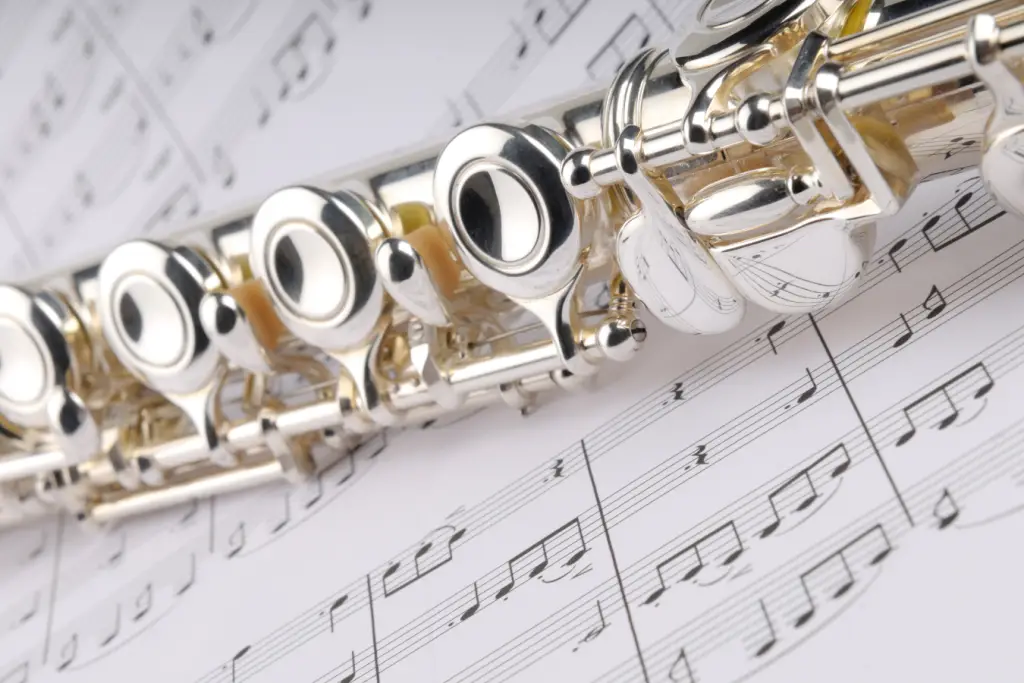Learning to play the flute is a rewarding journey that requires dedication and consistent practice. The time it takes to become proficient varies for each individual, depending on factors like natural aptitude, practice frequency, and musical background.
On average, it takes 6-12 months to learn the basics of flute playing and develop a decent sound. This timeframe allows beginners to master proper breath control, embouchure formation, and fingering techniques. Many students can play simple melodies within a few weeks of starting lessons.
Advancing to an intermediate level typically requires 2-3 years of regular practice. At this stage, players can perform more complex pieces and have a better understanding of music theory. Reaching an advanced or professional level often takes 5-10 years of dedicated study and practice.
Understanding the Flute Learning Process
The flute learning process involves distinct stages and is influenced by several key factors. Mastering this elegant wind instrument requires dedication, practice, and a clear understanding of the journey ahead.
Factors Affecting Learning Time
Individual aptitude plays a significant role in flute learning speed. Some students naturally grasp musical concepts and techniques more quickly than others. Prior musical experience can accelerate the process, as familiarity with reading music and rhythm translates well to flute playing.
Practice frequency and quality are crucial. Daily, focused practice sessions yield faster progress than sporadic, unfocused efforts. A structured learning approach, such as taking lessons from a qualified instructor, often leads to more efficient skill development.
Age can impact learning speed. Children often learn faster due to neural plasticity, while adults may progress more slowly but typically show greater dedication and self-discipline.
Stages of Flute Mastery
Beginners start with the basics: proper posture, hand positioning, and producing a clear tone. This initial stage typically lasts 3-6 months, depending on practice intensity.
The intermediate stage focuses on expanding the range of notes, improving breath control, and introducing more complex musical pieces. This phase can last 1-2 years.
Advanced players refine their technique, work on intricate fingerings, and develop expressive playing. Reaching this level usually takes 3-5 years of consistent practice.
Professional-level mastery involves perfecting all aspects of flute playing, including advanced repertoire and improvisation. This stage can take 7-10 years or more to achieve.
Essential Practice Techniques
Mastering the flute requires consistent, focused practice using proven techniques. Regular practice sessions and addressing common challenges are key to steady improvement.
Effective Practice Habits
Start with a warm-up routine including long tones and scales. This helps develop breath control and finger dexterity. Practice for 30-60 minutes daily, focusing on specific goals for each session.
Use a metronome to improve timing and rhythm. Begin slowly and gradually increase tempo as skills improve. Record practice sessions to identify areas needing improvement.
Incorporate sight-reading into daily practice. This builds reading skills and expands repertoire. Practice in front of a mirror to observe posture and embouchure.
Common Challenges and Solutions
Overcoming the initial struggle to produce a clear sound is crucial. Practice proper embouchure formation and experiment with lip placement on the headjoint.
Fingering difficulties can be addressed through slow, deliberate practice of scales and arpeggios. Use fingering charts and break complex passages into smaller sections.
Breath support issues often arise. Practice deep breathing exercises and long tones to build lung capacity and control. Proper posture is essential for optimal breath support.
Intonation problems can be solved by using a tuner during practice. Listen carefully and make small adjustments to embouchure and air stream as needed.
Resources and Materials
Selecting the right flute and study materials is crucial for a successful learning journey. These resources provide the foundation for developing proper technique and musical skills.
Selecting a Flute
Beginners should start with a student-level flute from a reputable manufacturer. These instruments are designed for durability and ease of play. Look for flutes made of nickel silver or silver-plated nickel silver.
Key features to consider:
- Closed-hole keys for easier fingering
- C foot joint for lighter weight
- Offset G key for improved hand positioning
Renting a flute is a cost-effective option for new players. This allows time to assess commitment before investing in a purchase.
Recommended Study Materials
Essential materials for learning the flute include:
- Method books:
- Rubank Elementary Method for Flute
- Trevor Wye’s Practice Books for the Flute
- Fingering charts: Visual guides for proper finger placement
- Tuner and metronome: Crucial for developing pitch accuracy and rhythm
- Music stand: Ensures proper posture while reading sheet music
- Cleaning kit: Maintains instrument hygiene and longevity
Supplementary resources:
- Online video tutorials
- Flute-specific exercise books
- Beginner-level sheet music collections
These materials provide structured learning pathways and essential tools for practice sessions.
Measuring Progress
Tracking improvement is essential for flute learners to stay motivated and identify areas for growth. Concrete goals and regular self-assessment help gauge advancement.
Setting Milestones
Establishing clear milestones provides a roadmap for flute progress. Beginners might aim to play a simple melody within the first month. Intermediate players could target mastering a challenging piece or technique.
Milestones should be specific and time-bound. Examples include:
- Play scales in all 12 major keys by month 3
- Perform a solo recital piece by month 6
- Join a community ensemble by month 9
Breaking larger goals into smaller, achievable steps maintains momentum. Celebrate each milestone reached to boost confidence and enthusiasm.
Self-evaluation Methods
Regular self-assessment helps flute students monitor their development. Recording practice sessions allows for objective listening and analysis. Students can compare recordings over time to hear improvements in tone, rhythm, and expressiveness.
Keeping a practice log tracks time spent and skills worked on. This helps identify patterns and areas needing more attention. Setting weekly goals and rating progress builds self-awareness.
Seeking feedback from teachers or experienced players provides valuable outside perspective. Participating in recitals or competitions offers benchmarks for comparison with peers.

